
One of the most pleasurable jobs in any garden is choosing which plants to grow.
It can be great fun to seek out new options and explore all the different possibilities for your garden.
Hyssop is one plant that can be a great choice for many gardens. So let’s take a look at how, why and where you might like to give it some space where you live.
What is Hyssop?
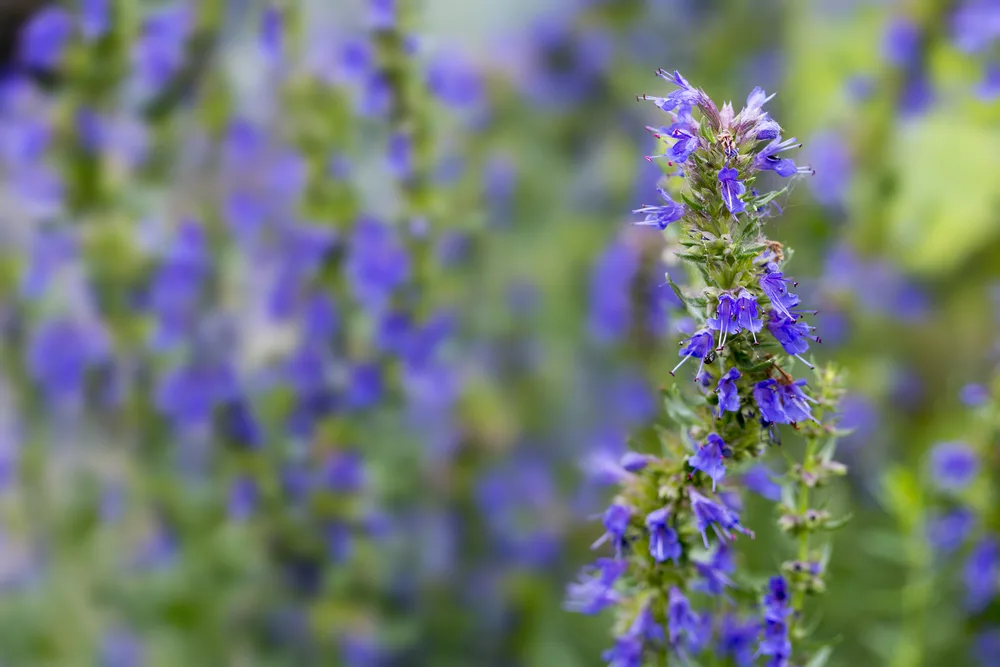
Hyssop (Hyssopus officinalis) is a small, compact evergreen shrub that grows to an eventual size of around 60cm wide and 60cm high. It grows at a medium rate and can work well in a range of settings.
This plant is a member of the Lamiaceae, or mint family. It is native to Southern Europe, the Middle East, and the region around the Caspian Sea.
Historically, it has been grown as a culinary and medicinal herb. And while it may have fallen out of favour for those uses somewhat in more recent years, there are a number of reasons to consider giving it a renaissance.
This plant has extremely aromatic leaves, and attractive purple, pinkish or, more rarely, white flowers that are in bloom, typically, between around July and September.
It won’t grow well in the shade, nor in waterlogged locations, but it will do well in plenty of different soil types as long as it is free-draining. It will tend to thrive in many full-sun positions and will do best in neutral or alkaline soils.
Why Grow Hyssop in Your Garden?
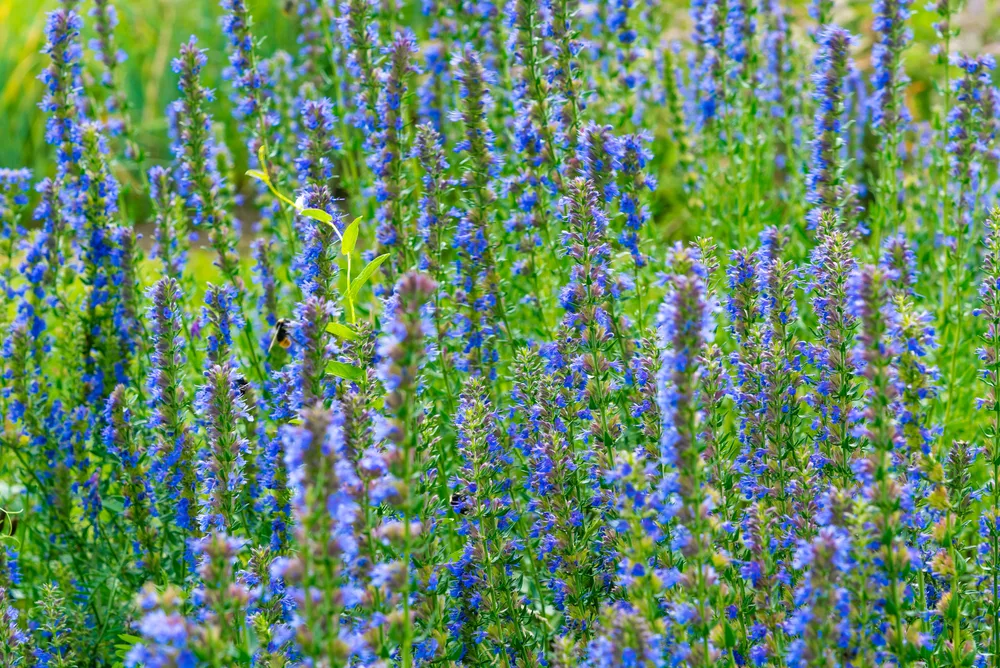
Hyssop is a plant that can be an ideal addition to many different types of garden. It can often be a good choice for the sunny fringes of a forest garden.
This plant also works well in dedicated herb gardens, alongside other Mediterranean herbs like lavender, rosemary and thyme.
It can also be grown in vegetable beds or in a kitchen garden. In such a setting, it can be used as a beneficial companion plant in a polyculture, or incorporated as living bed edging or a low hedge to separate different areas of a garden.
In my garden design work, I often recommend hyssop as a great choice for lower rainfall areas. It’s characteristics mean that it can be a good option for relatively drought-tolerant landscaping. But even in areas with acidic soil, or soil that is less free-draining, hyssop can still be grown in pots, raised beds or containers.
So, let’s take a closer look at ten of the main reasons why hyssop is a plant that you might want to grow in your garden:
1. Hyssop is a Great Drought-Tolerant Plant
Perhaps the number one reason to grow hyssop in your garden is for its drought-tolerant characteristics. We should all be gardening with our climates in mind. And for many gardeners, that means taking low rainfall and relatively arid conditions into account.
As climate change continues to bite, more and more gardeners are having to choose plants that can cope with less water. Hyssop is one great relatively low-maintenance drought-tolerant plant to consider.
But while it will thrive in warm, dry gardens, it is also very cold hardy, and when in its dormant phase, can tolerate temperatures down to around minus 13 F.
2. It Can Make a Great Dwarf Hedge or Living Bed Edging
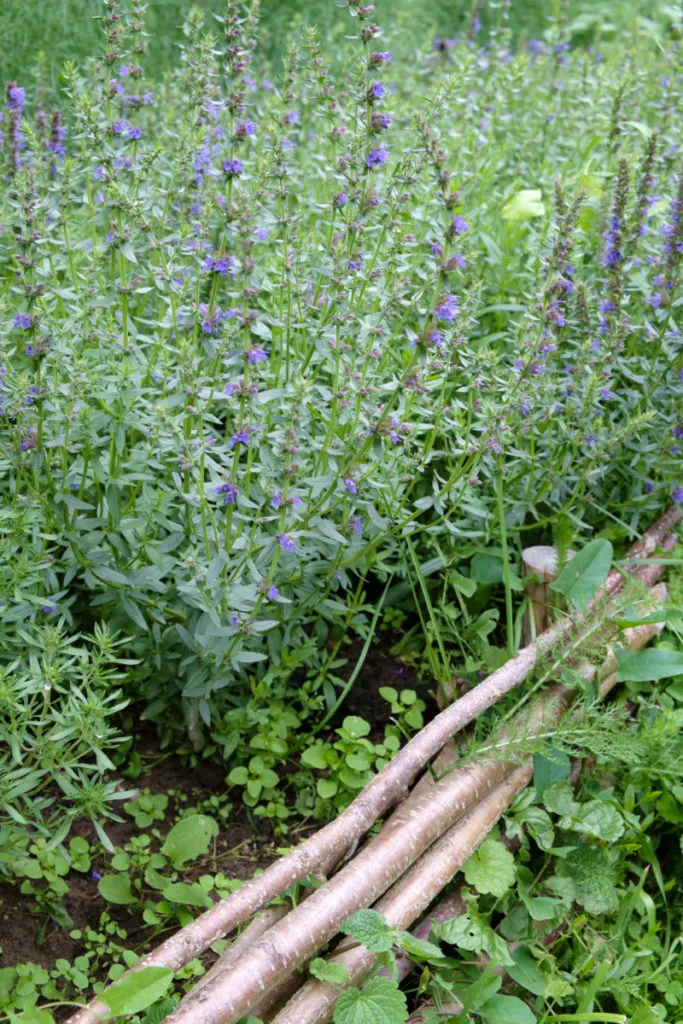
The compact form and growth habits of this interesting plant mean that it can be a great choice for creating a dwarf hedge, or living bed edging.
Imagine, for example, that you are creating a new sunny growing area for vegetables or perennial herbs on an existing lawn. Bordering that area with hyssop could be a great way to stop grass and weeds from growing around the edges of the bed. And its growth habit will add a softness while still retaining a neat and orderly feel.
Hyssop could also provide edging along the southern side of a fruit tree guild, or form the sunny boundary of a forest garden zone. It can work well on its own, or interspersed with lavender plants, which look great alongside it in a low hedge or in edge planting.
3. It Can Make Good Ground Cover Plant in an Arid Growing Area
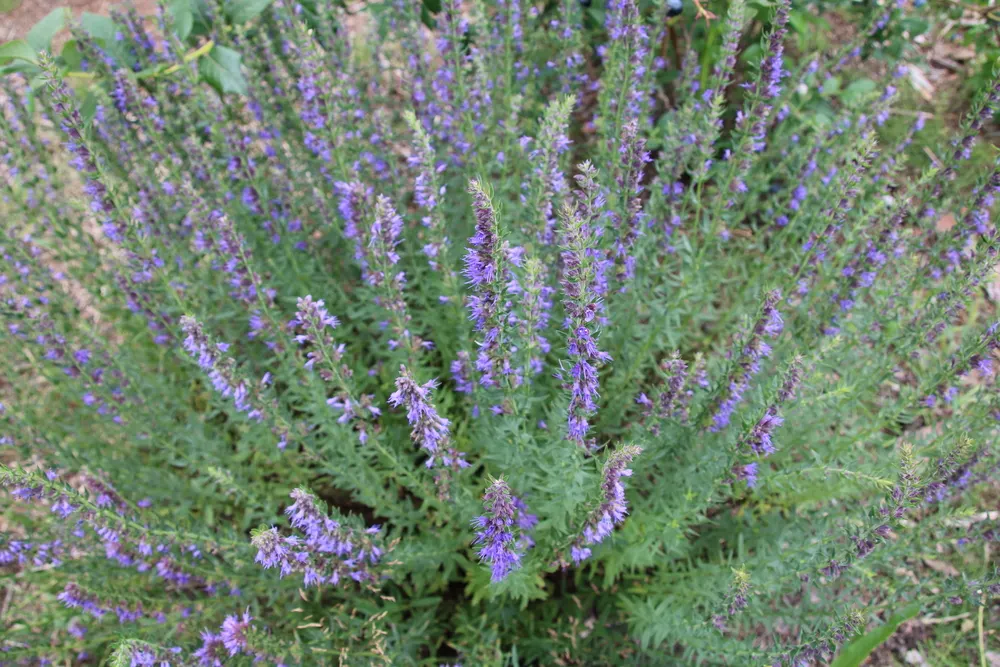
Hyssop does not have to be restricted to edges either. It can also, when planted relatively densely and close together, create good ground cover in arid areas.
If you have a south facing bed or border, planting hyssop alongside other Mediterranean herbs suitable for arid conditions, such as thyme, can help keep soil covered. This can reduce water evaporation from the soil and aid the growth of other plants grown nearby.
A good ground cover will aid other plants by reducing moisture loss. And it can also help to keep weed growth and competition at a minimum.
Hyssop works well in a planting scheme alongside other full-sun perennial flowering plants, such as lavender, candytuft, sea thrift, coneflower, lupines, sedums, Russian sage and heathers.
Planting hyssop alongside complementary perennial flowers can help keep your garden looking great all year round.
4. Hyssop Attracts Many Pollinators and Other Beneficial Insects
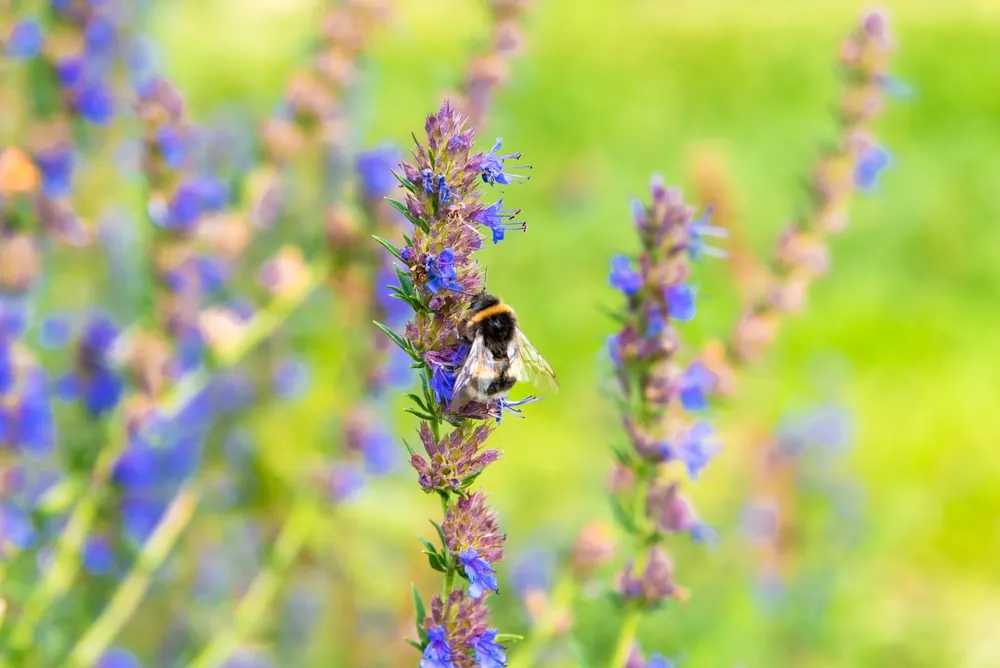
Hyssop won’t only be beneficial to plants grown nearby due to its ground covering or edging properties. It can also be hugely beneficial in a garden because it is such a great wildlife plant.
Hyssop is a fantastic plant for wildlife friendly gardens. It attracts a wide range of pollinators, and other beneficial insects.
If you are a beekeeper, you may already be familiar with hyssop, as it is often used as a landscaping plant close to hives. It produces nectar which western honey bees use to make a rich and aromatic honey.
5. And Can Be Used as a Trap Crop for Cabbage White Butterflies
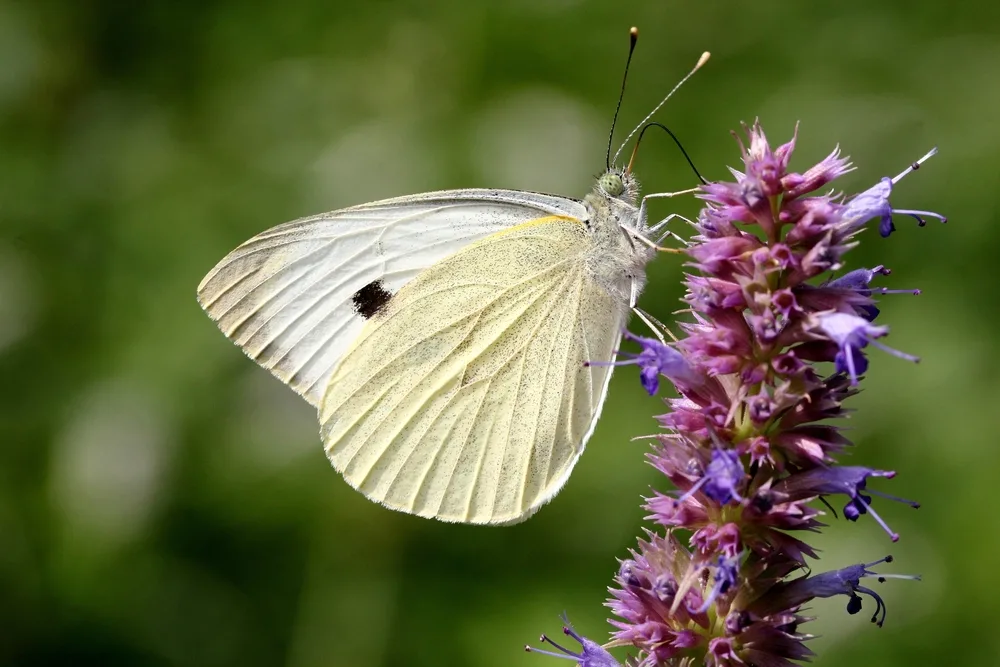
Another interesting thing about hyssop is that, like other aromatic herbs, it can also repel, distract or confuse a range of pest species.
One example of this is that hyssop can be used as a trap crop for cabbage white butterflies. These butterflies (their caterpillars) can massacre a brassica crop.
But when hyssop is grown elsewhere in the garden, the butterflies may lay their eggs on it preferentially. So this can help keep your main brassica food crops safe.
6. Hyssop is a Useful Companion Plant
Of course, since it can improve environmental conditions (by giving ground cover), attracts beneficial insects, and repels, confuses or distracts certain pests, hyssop is a great companion plant for a wide range of vegetable crop plants that benefit from the wildlife drawn to the area.
Hyssop can be a great companion crop for fruits, and for a wide range of other plants. Any plant that requires insect pollination should benefit from having hyssop grown close by.
It can also attract predatory insects which eat aphids and other common pests. So it can be a good choice for growing alongside a range of typical annual or perennial crops.
7. It is a Useful Pot Herb
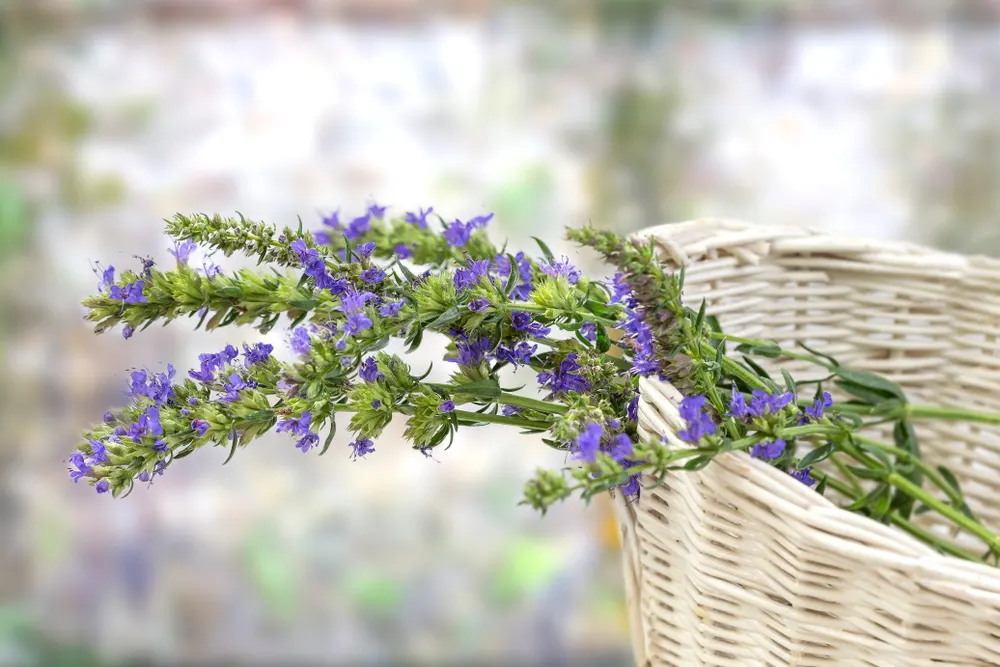
In addition to being useful while in growth in your garden, hyssop can also be useful around your home. Once harvested, it can be used in a range of different ways.
First of all, hyssop is a culinary herb. It’s strong flavour (somewhat like a mix between sage and mint) means that it is usually used only in moderation. But it can find a place in a wide range of recipes.
The shoot tips and young leaves can be used raw or cooked, as a flavoring for salads, soups etc.. An essential oil from hyssop can also be used in food flavouring. Commonly, hyssop is used in meat or oily fish dishes. It is said to aid in the digestion of fatty, rich foods. However, it can also be used in a range of vegetarian or vegan dishes, either fresh or dried.
Interestingly, hyssop is also used as a flavoring in alcoholic drinks. It is a key ingredient in Chartreuse, for example.
8. Hyssop Has a Number of Medicinal Uses
This herb is also a traditional herbal medicine. In the past, it was a popular household remedy for a range of ailments and those with an interest in natural remedies are rediscovering its potential.
It can be beneficial for stomach issues, and can also help promote recovery from bronchial and respiratory infections. Though not to be used during pregnancy, hyssop can be used as a home remedy for these issues. The flowers and leaves both have antiseptic properties. A poultice made from the fresh herb is also used to help heal wounds.
9. Hyssop Can Be Used in Perfumery

Hyssop is also prized for its fragrance. The essential oil is often used in perfumery. And the fresh plant can be used as a strewing herb, as pot-pourri, or to bring a delightful fragrance into your home in other ways.
Due to its antiseptic properties, as well as its fragrance, hyssop can also be used in a wide range of natural skin and beauty products.
Hyssop is said to have anti-inflammatory, anti-microbial, anti-oxidant and uplifting properties and is often used to make natural soaps and other skincare products.
10. It Can Be Used in Controlling Bacterial Plant Diseases
Finally, hyssop can also be of use back in the garden. Fresh hyssop brewed into a tea and sprayed onto plants is said to be helpful in controlling bacterial diseases in plants.
So brewing up a tea could help keep your crops healthy.
How To Grow Hyssop
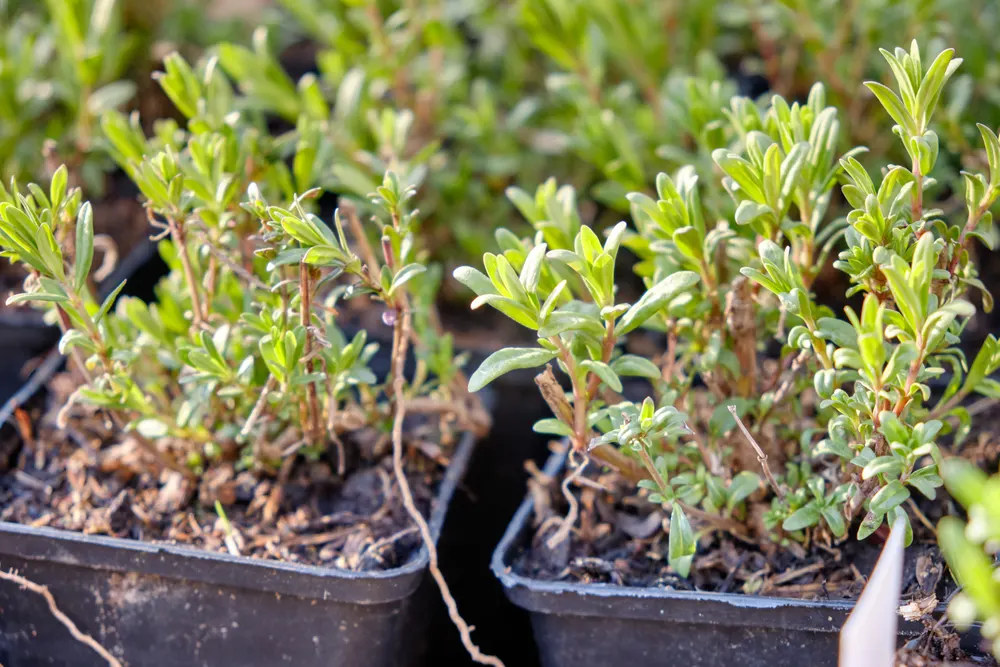
By now, you should be convinced of the benefits of growing hyssop in your garden. And you may be wondering how to do so. Fortunately, hyssop is generally pretty easy to grow.
Hyssop can be sown as seed in spring. The seeds should only just be covered. They should germinate relatively quickly. The seedlings should be potted up as they grow, then grown on undercover for their first winter. They can then be planted out into their permanent positions in late spring or early summer the following year, after the last frost date in your area.
You can also propagate hyssop relatively easily by root division in the fall. Alternatively, you could simply purchase hyssop plants for your garden.
It is a good idea to cut back hyssop in early spring, and again after flowering to stop them from becoming too woody and spindly. Older plants may become woody and so it is best to propagate your plants and replenish your stock with new plants every 4-5 years.
Make sure plants receive enough water in the early stages. But once established, hyssop should require little care. So they can be a great choice for a relatively low-maintenance garden.

Get the famous Rural Sprout newsletter delivered to your inbox.
Including Sunday musings from our editor, Tracey, as well as “What’s Up Wednesday” our roundup of what’s in season and new article updates and alerts.

